Flavoring kombucha is an easy process that can change the taste, colour, and carbonation in homemade kombucha. Learn how to flavor your next batch of kombucha and make it fizzy with second fermentation. There is no secret recipe; your taste and creativity will be the best guides.
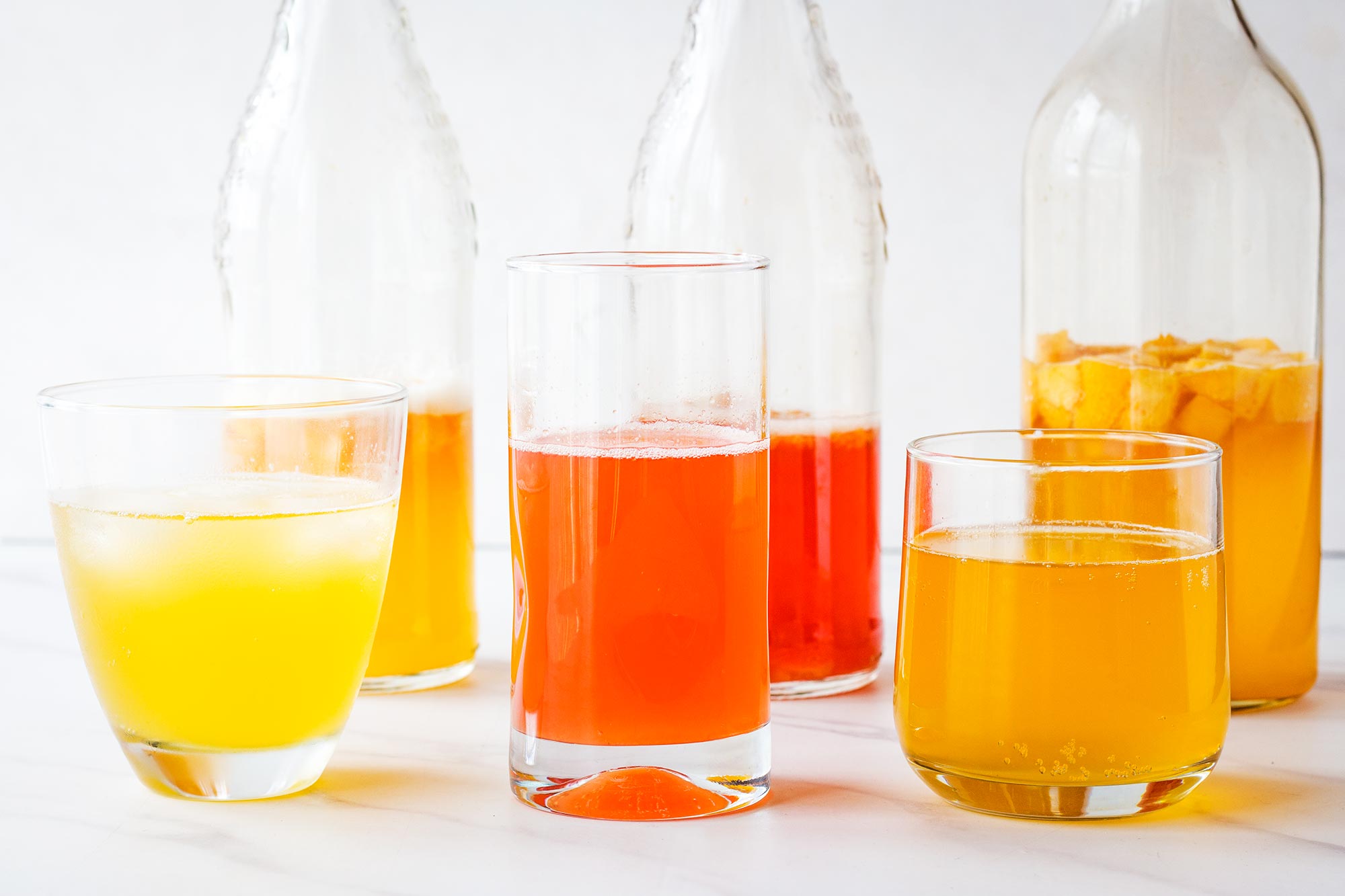
This is the third post in my Kombucha series. Find the other posts HERE:
>> How to Make a Kombucha Scoby
>> How to Brew Kombucha at Home
Second Fermenting First Fermented Kombucha
Once your kombucha has fermented for the first time, you can pour the kombucha into glass bottles with flip tops. A small funnel will come in very handy here. At this point, you can add flavoring agents like fruit, juice, herbs, brewed herbal teas like hibiscus, and more to add flavour and colour to the kombucha. Then, you enclose the bottles and let them sit for another day or two to develop flavor and carbonation. You may want to open the bottles once or twice a day to release some CO2 and relieve pressure in the bottles.
Purchasing high-quality bottles that are meant for homemade brews are ideal here. But I also re-use fancy French soda bottles or the brown glass bottles from German beer with flip tops.
Once your kombucha has undergone second fermentation, you can place it in the fridge until you are ready to drink it. Then, you can pour it straight into a glass to enjoy or through a small strainer into your glass if you want to remove the fruit you flavoured it with. Home-brewed kombucha is also delicious over ice.
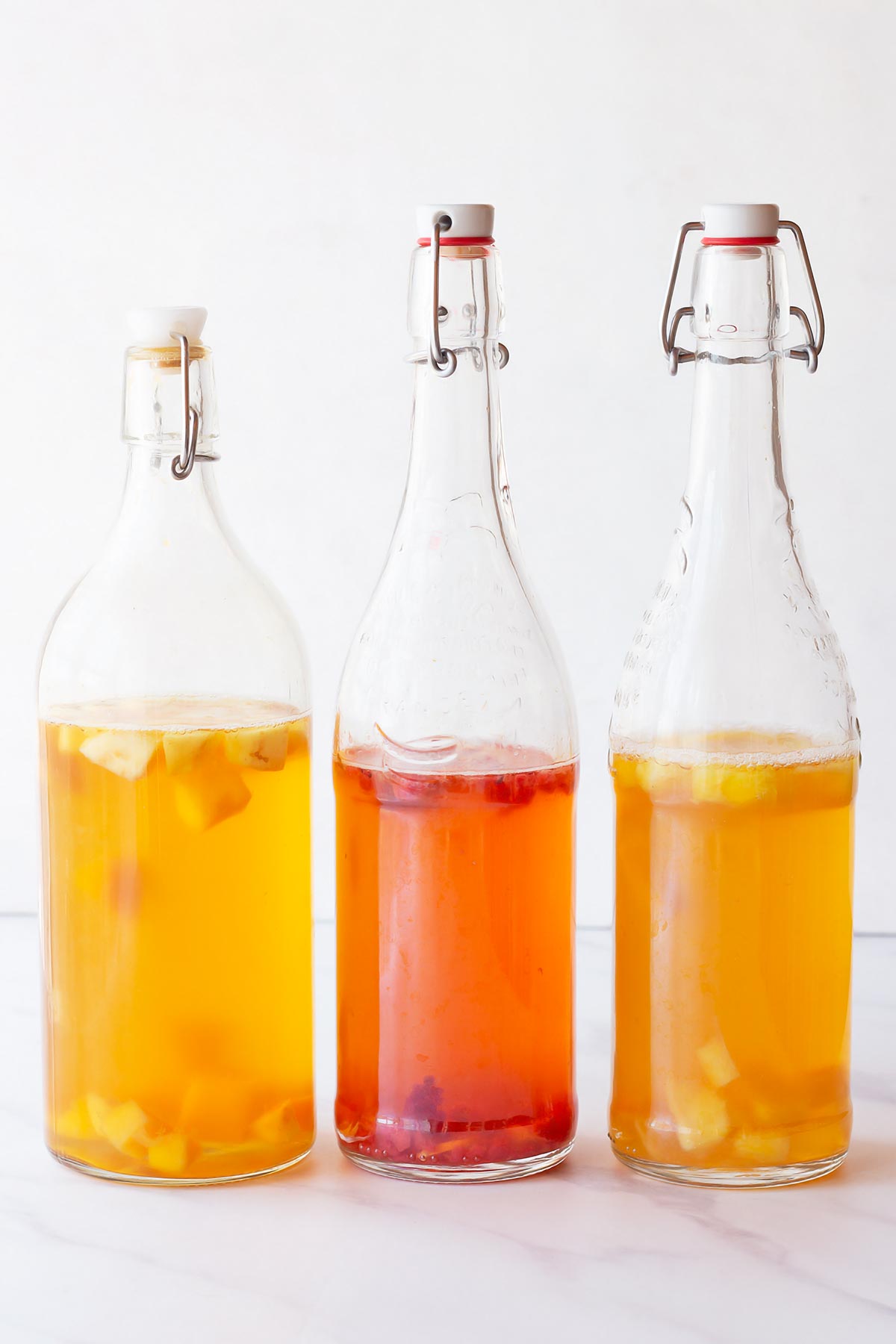
What is Second Fermentation?
Second fermentation is a period of fermentation that occurs after the first fermentation. The first fermentation is the process where you add a SCOBY (symbiotic culture of bacteria and yeast) and starter tea to a sugary batch of tea, and allow it to acidify and lighten in colour over a period of approximately 7-14 days.
The Process
Second fermentation is actually quite easy. You must ensure that you have food and brew-grade flip-top bottles for this process. Ones that are suitable for holding brews are ideal because they must be able to hold up to the pressure of carbonation, which is caused by yeasts.
Once you have your sanitized bottles, you can proceed to divide some fruit, fruit juices, concentrates, herbs, spices, and other flavourings into the bottles before topping the bottles with your homemade kombucha.
Next, you seal your kombucha bottles and allow them to sit at room temperature for a few days. This process is to allow the flavours of the added fruit, juice, and herbs to infuse into the kombucha while allowing the yeast in the kombucha time to feed on the natural sugars in order to create carbonation.
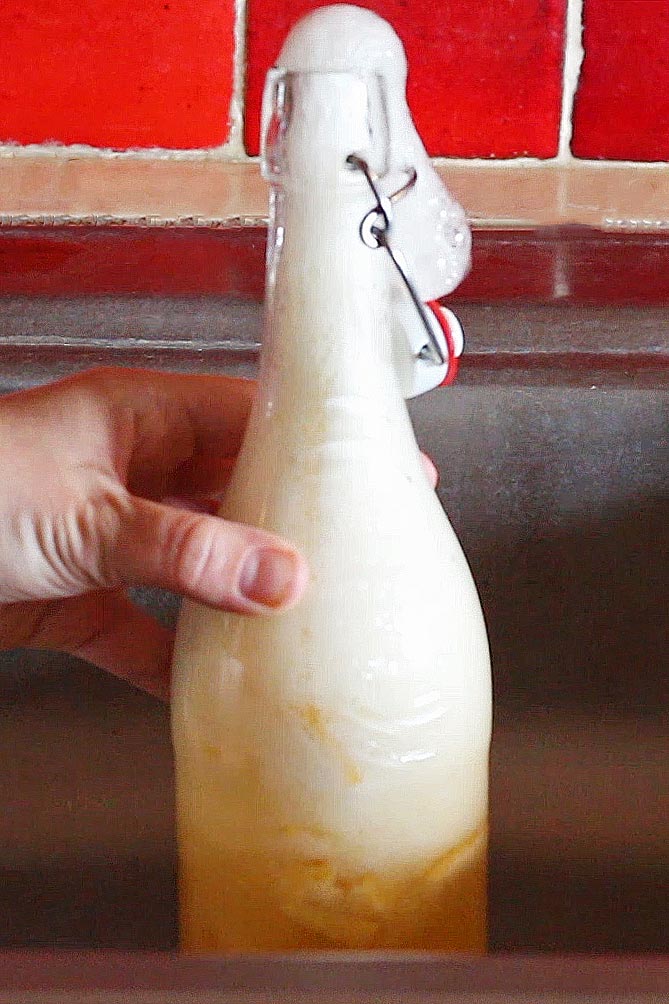
During this process, you should burp the bottles at least once a day to release excess pressure. Sometimes it is a good idea to do this over a sink or even outside if you aren't sure how active your kombucha is. High sugar fruits like pineapple or oranges tend to provide a very fizzy and active kombucha. The entire second fermentation process will take one to 4 days, or until the kombucha reaches the level of fizz and flavour that you like.
Even if you prefer to have your kombucha plain, you can still second ferment it. Simply bottle it with a teaspoon or so of granulated white sugar to add fuel for the yeast to feed on and create carbonation.
Chilling and Serving
Once your bottles of kombucha have fermented for a second time, you can put them in the fridge until chilled before serving. Kombucha is great served over ice or in glasses on its own. Be sure to place a fine-mesh strainer over the glasses in order to strain out the flavouring ingredients unless you like the added texture of your kombucha beverage.
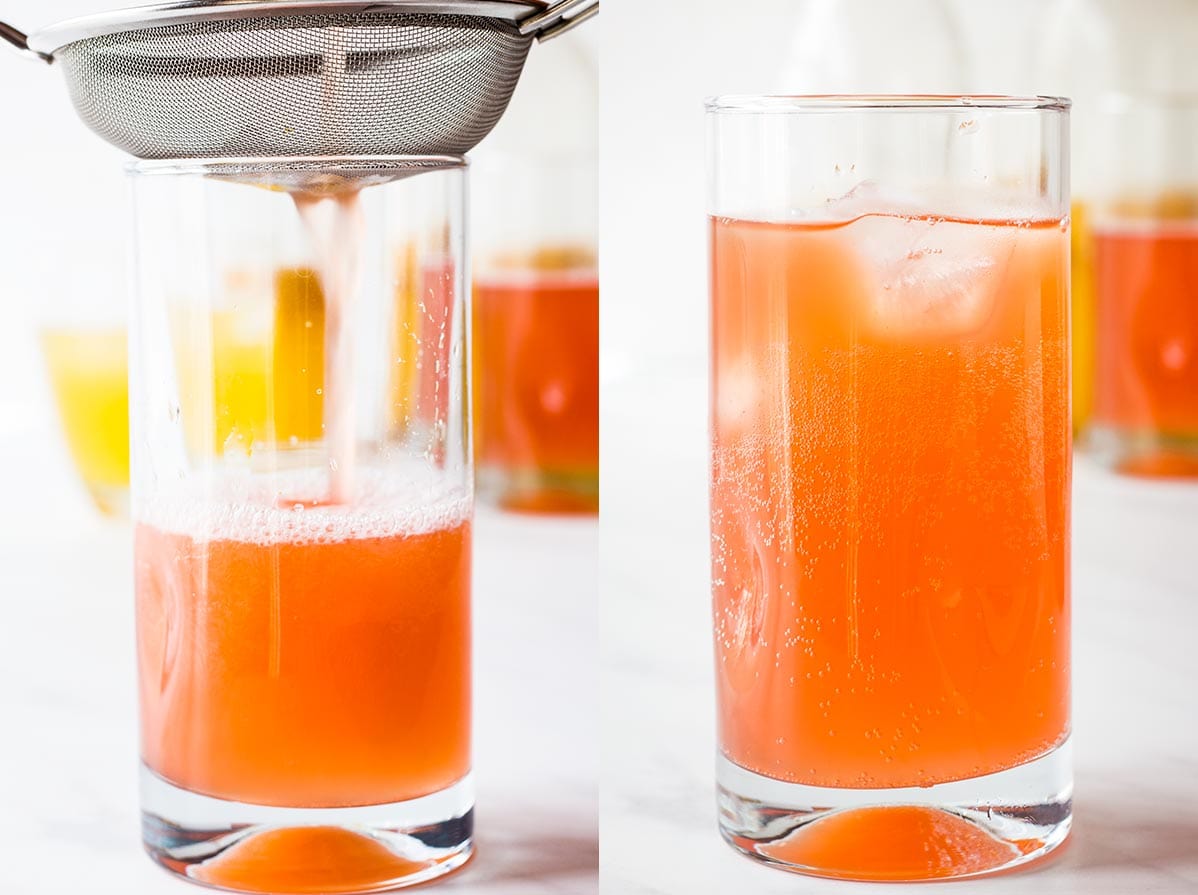
Adding Fruit
Adding fruit to kombucha can modify both the taste and colour of your kombucha. You can use both fresh or dried fruit in your batches.
You will need to chop the fresh fruit so that it will fit through the mouth of your kombucha bottles. Some people like to puree the fruit as well before adding it into the bottles but this can create a lumpy kombucha unless you put it through a fine-mesh strainer when you pour it into glasses. If you add whole fruit like blueberries, they will take on the fizziness of the kombucha adding an intriguing texture to your glass of kombucha.
There is no hard and fast rule to how much fruit you should add to each kombucha bottle but typically filling about 5 percent of each bottle with chopped fruit is a good rule of thumb. Here are some fruit combinations that might be good in your 2nd fermentation kombucha.
- Fresh or frozen pineapple chunks
- Mango & ripe guava
- Raspberries + ginger slices
- Fresh or dried apricot with orange
- Chopped apple and pear
- Blackberries, raspberries, and blueberries
- Grapefruit, orange, lemon, and lime
- Blueberries and apple
- Cranberries and cherries
- Pineapple and mango

Using Fruit Juices And Concentrates
Fruit juice and concentrate are also wonderful additions to second fermented kombucha. These can include pure juices, nectars, or any other fruit blend you can find. You can add these to your kombucha bottles as the sole flavourings or you can include them with herbs and chopped fruit.
If using fruit juice, a good amount to use per 16 ounces bottle of kombucha would be about 2 tablespoons. However, feel free to play around with amounts in order to come up with the perfect kombucha for you. Here are some potential fruit juice/concentrate combinations for you:
- Guava and papaya nectar with pineapple juice
- Grape juice and cranberry juice
- Grapefruit juice and lime juice
- Apple juice and juice from mashed blueberries
Flavoring With Herbs And Spices
Herbs and spices are excellent additions to a kombucha brew, adding a delicious savouriness and nuance to tangy, tart, and sweet kombucha. Use however little of as much as you would like in your second fermented kombucha, however, it is best to not exceed an ⅛ teaspoon of hot spices like cayenne pepper if you are using a 16 oz bottle. Otherwise, use a ½ teaspoon to 2 teaspoons of fresh herbs to infuse kombucha with herbaceous flavour. Here are some spicy combinations you can include in bottles of kombucha.
- Strawberries, vanilla, and fresh basil
- Blueberries and lavender
- Grapefruit juice and rosemary
- Orange juice, cranberries, and cloves
- Mango, mango juice, and cayenne pepper
- Lemon and fresh ginger
- Berries, cinnamon, and honey
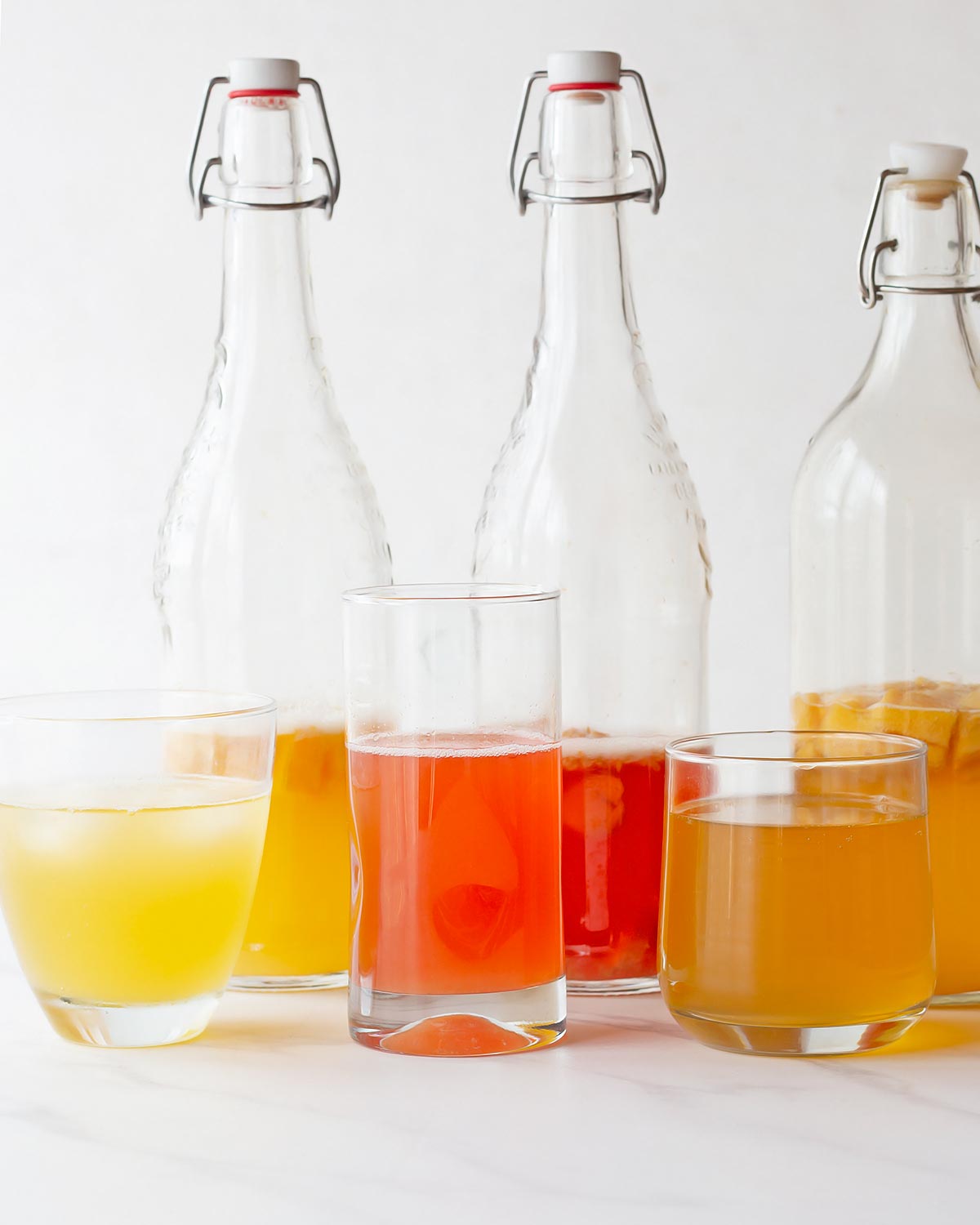
Tips When Flavouring Kombucha
While flavouring kombucha is a fun and creative process, there are a few things to keep in mind.
- Use the appropriate amount of fruit, juices, herbs, and spices to achieve the best flavour possible. You won't hurt a batch by using more or less in your bottles, but filling 5% of each bottle of kombucha with flavouring agents is a good rule to achieve the fullest flavoured kombucha.
- Use whatever fruit is affordable and in season. Frozen fruit works well when certain fruits are out of season too.
- Try using only ⅛ teaspoon of hot spices like cayenne pepper unless you already know you would like more heat.
- Play around with fresh herbs, utilizing at least a ½ teaspoon all the way to a couple of tablespoons to achieve your desired flavour.
Once you have made second fermented kombucha, it may become an addictive process. Not only will you have more exciting kombucha to drink, but you will also be able to enjoy the creative process of mixing and matching fruits, herbs, and spices to make your favourite flavour combinations.
More Fermentation Recipes You'll Love:
Recipe
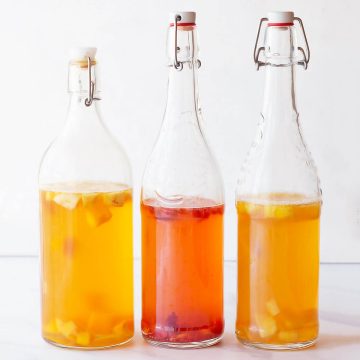
Flavoring Kombucha - Second Fermentation
Equipment
- flip-top glass bottles
Ingredients
- 2-4 quarts homemade kombucha
- ⅓-1/2 cup fresh or fruit, or fruit juice per quart of kombucha
Instructions
- Fill the kombucha into flip top bottles.
- Add ⅓-1/2 cup of flavoring agents like chopped up fruit or juice per 1 quart/liter of bottled kombucha. My favorite flavors are pineapple chunks, raspberries + ginger slices, and a combination of finely diced mango + guava.
- Close the lids and let the kombucha ferment for a second time until it is bubbly. This may take 1-5 days - sweeter add-ins make for faster fermentation. Be sure to 'burp' the bottles daily over the sink so they don't built up too much CO2 pressure.
- Once the kombucha is flavored and bubbly you can serve it, preferably chilled or over ice.
- I store my flavored kombucha in the fridge until it is used up.
Pin for later?
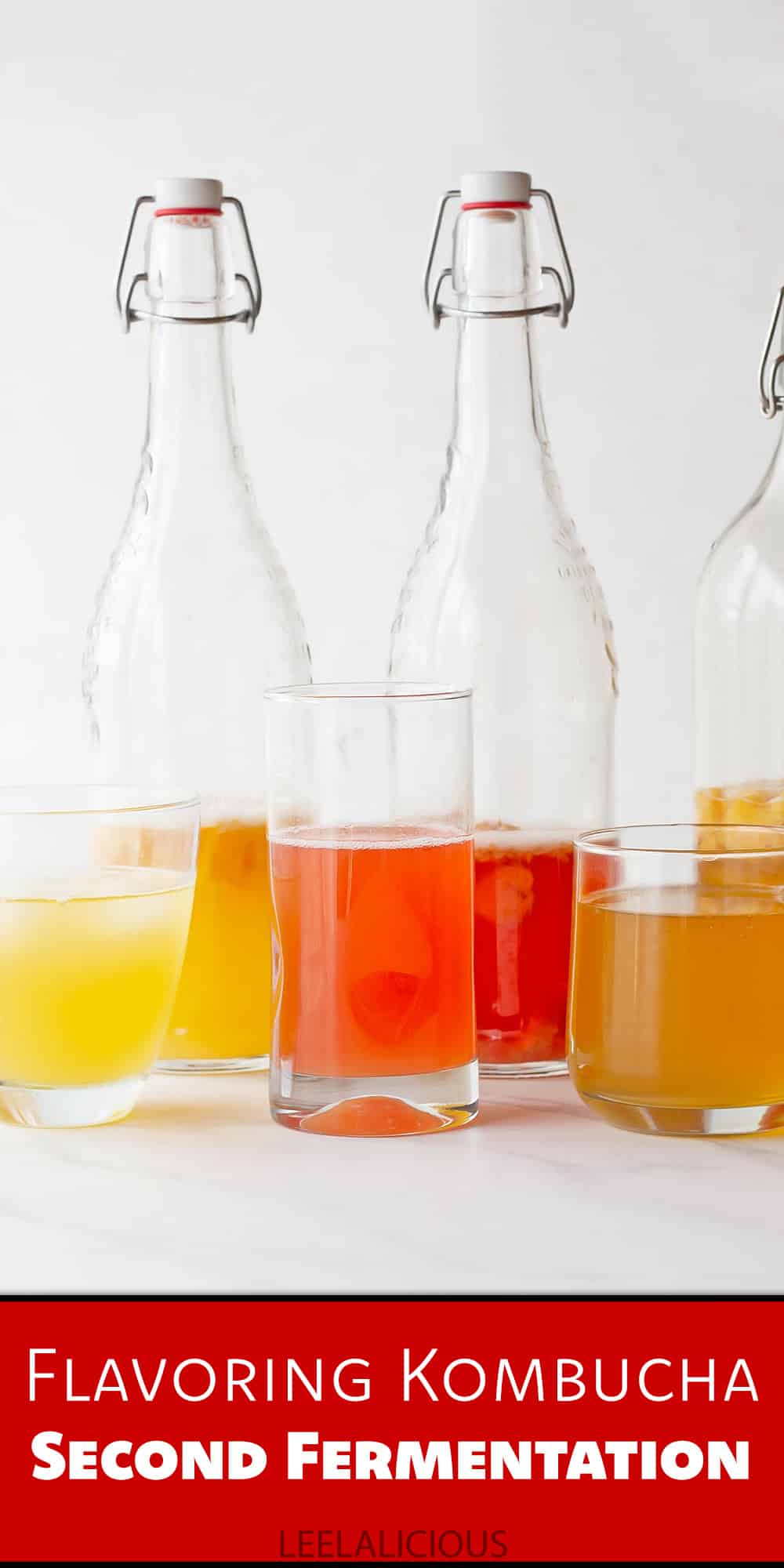
Random Questions
Experiment with various fruits, juices, herbs, and spices for unique flavors. Avoid exceeding 5% of the bottle's volume with flavoring agents for the best results.
Yes, honey can be added to enhance the flavor. Experiment with small amounts to achieve the desired taste.
Before the second fermentation, kombucha should be tangy, slightly sweet, and lightly carbonated, indicating the completion of the initial fermentation.
Adding a teaspoon of granulated white sugar to plain kombucha during the second fermentation can enhance carbonation, even if you prefer it without additional flavors.


Eric
Very interesting post. I recently started my adventure with kombucha by buying it on the Mr. Lemonade website https://www.mrlemonade.co.uk/collections/kombucha, and I really enjoyed it. It's nice to read more about it, especially regarding flavors and recipes.
Jennifer @ Leelalicious
Thanks for commenting, Eric! Kombucha is so fascinating and surprisingly easy to make at home.